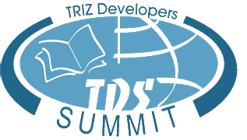07/26/2012
Review
Regarding Preface
Mr. Hongyul Yoon skillfully described Cause Effect Chain Analysis and highlighted its disadvantages.
In order to improve the technique of using Cause Effect Chain Analysis the applicant suggested two new methods:
1. Multi-Screen Thinking with Time-Condition Axis, Function Analysis and Parameter Analysis for easier and more systematic building Cause Effect Chains
2. State-Interaction Model as a guide to find missing hidden causes for the more exhaustive set of causes
RegardingChapter I. Multi-Screen Thinking with Time-Condition Axis, Function Analysis and Parameter Analysis
Applicant proposed to adopt Multi screen thinking for easier Cause Effects Chain Analysis, including:
1. Time-Condition Axis which is an adapted version of the traditional Time Axis
2. Multi-screen should be prepared BEFORE building Cause Effect Chains
Applicant used two following examples for his ideas demonstration:
1. Lightning Protection for Radio Telescopes (Altshuller’s case study for ARIZ-85C)
2. Galvanic corrosion of a coated steel body (source of this example was not recognized)
Reviewer did not understand completely applicant’s description and explanation related with general axis-by-axis procedure of Multi Screen Thinking and resource analysis according to System Scale Axis of Multi Screen Thinking.
Regarding Chapter II.State-Interaction Model for Revision of Cause Effect Chains
‘State-Interaction Model’ in applicant’s description is a description of Physical Contradiction (as Reviewerunderstood).
Reviewer found only one example (fan and noise) for illustration of Applicant proposed ideas (Fig.11. Application of‘State-Interaction Model' to insufficient descriptions of causes).
Regarding Chapter III.The Detailed Procedure of Cause Effect Chain Analysis Based on Multi Screen Thinking and State-Interaction Model
Reviewer did not find novelty in the most of Applicant’s demonstrated ideas, for example:
Ø Proposed ‘Time-Condition Axis’ has the following structure: Time-Condition 1: no moisture condensation and Time-Condition 2: during moisture condensation.
We can find the similar ‘Time-Condition Axis’ structure in ARIZ-85C, step 2.2. (Determine Operational Time)
Ø Applicant proposed “Function Analysis with Parameter Analysis for each stage of Time-Condition Axis on Subsystem – System - Supersystem Screen”.
We already use for many years (15 years, at least) Parameter Analysis of interactions between components in Functional Model.
Functional model already contains components of super-system, system, and sub-systems.
Stages and operations of processes are already distributed in time in Functional models for processes.
Conclusion
1. Cause Effect Chain Analysis technique development is very important for TRIZ Technology evolution and practice.The subject of Applicant’s dissertation related with
2. Chapter III.).Many of proposed ideas were already used in TRIZ practice for many years and do not contain an appropriate novelty (see notes for
3. We found only few examples in the Applicant materials for his Method demonstration. It is not enough for proof of correctness of the proposed ideas.
4. Reviewer had some difficulties to understand meaning of proposed materials.
I am not sure that Mr. Hongyul Yoon is properly prepared to be certified as TRIZ Master.
